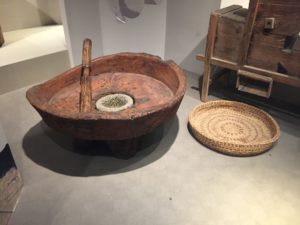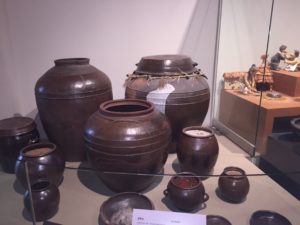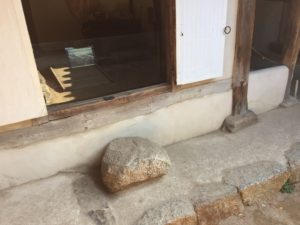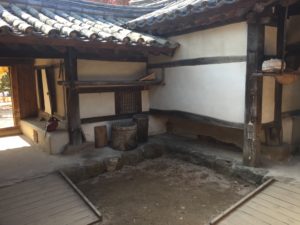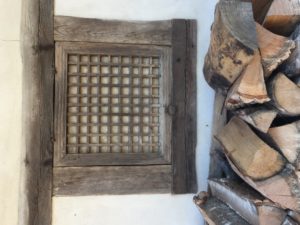Sunday, 4 November 2018
A trip to the Folk Museum, which is situated by the vast Gyeongbokgung with its spacious courtyards and many ancillary buildings. The Folk Museum building is beautiful and spacious and within are displayed the common tools, farming implements, looms, bowls, kitchen aids used by the Folk. These are, of course, much cleaned up so that the functional beauty can be appreciated. Everything is brown, of wood or clay, practical and useful and attractive in it simplicity. Such a contrast to what you see in the Palaces Museum.
But this is the way ninety percent of the people lived, so it is fitting that their lives should be set out and recalled. Reproductions of the houses of the peasants and middle class are inside the museum as well as of the clothes worn by both classes. The Curator must have a sense of humor. Under the caption “Water Management” is set on a manikin a straw raincoat, just as were used in Japan and exactly like one worn by Clarence Gamble for a photo when he was in Japan.
It was pleasant and easy to walk through this spacious museum in the pleasant lighting on the polished floors amidst the order and cleanliness and streams of sunlight through the windows. It was a compelling experience to step outside and enter the reconstructed house of the lower class peasant: a rough stone foundation supporting small dark rooms set around a small courtyard with dirt floor. Dark brown wood and dark brown wooden rafters, windows in every room but small and the rooms more dark than light.The cold of the stones and the roughness of the swept dirt courtyard, the darkness, which kept things cool in the summer but oh! the winters must have been so very cold. Wood kept the kitchen stove burning and the kitchen might have been warm, but I did not see any fireplaces or stoves in the other rooms. There is much to be said for central heating.
Note to David and others interested in shoe-making. A large exhibit was devoted to shoe-making in the twentieth and twenty-first century. I did not see anything about the construction of the straw sandals, which were such important footwear for centuries, but much about the highly constructed shoe of today. Curious!

